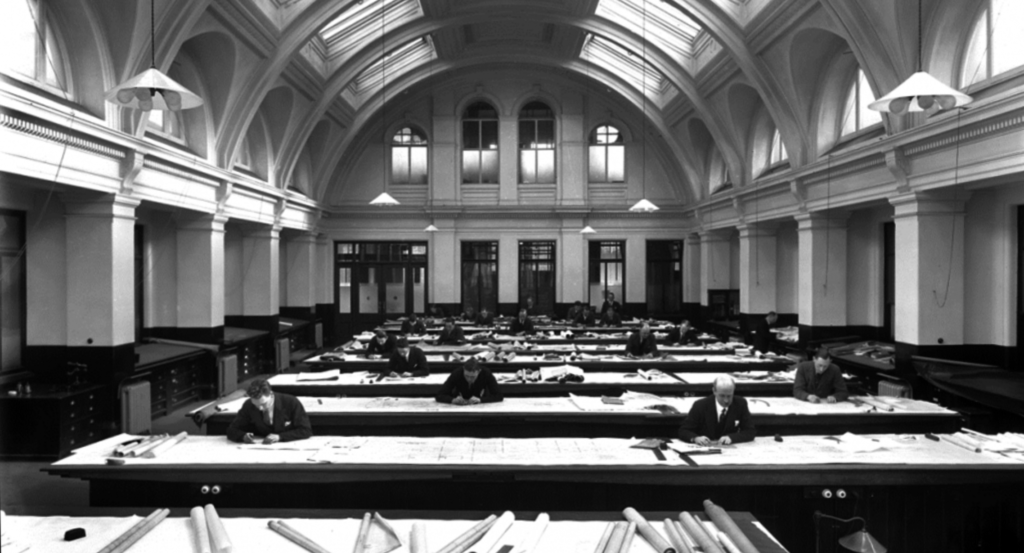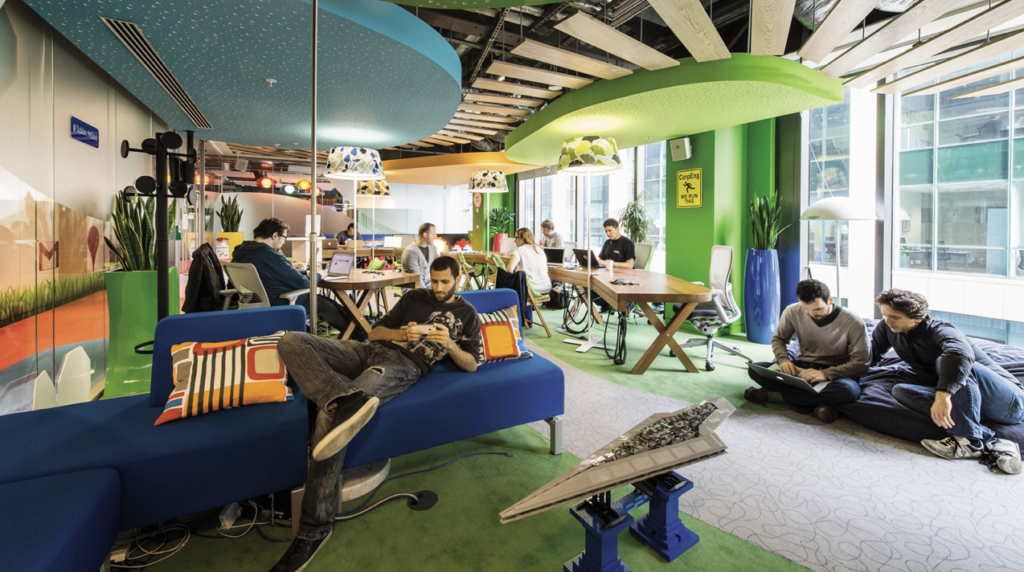Context
Towards a new studio environment. I imagine that sooner or later the current studio environment where architecture students work mostly—or even exclusively—at their desks will become obsolete. Over recent decades, architecture schools have made a conscious effort to provide students with desks as part of their architecture design studios (belonging to the student for the semester) that are generous in scale and accommodate activities ranging from a response to program briefs and desk crits to conducting digital research, completing homework, viewing videos, listening to music and podcasts, making models, and occasionally enjoying a quick and often not so healthy snack.

Although the current desks in most schools were designed some time ago, they now serve as drafting table, office, library, nesting table, theatre, gallery, auditorium, and dining table. While these activities are an accepted part of the lives of today’s architecture students, they are mostly individual activities rather than collective endeavors. While common learning areas exist, students have less access to them than before due to increased enrollment and space constraints. When provided, students elect to use these common areas as places to discuss their work with peers and faculty. Thus, why not expand on this.
Of course, this does not include the typical seminar rooms and review spaces that work as an important extension of student learning, but which are not open and public all the time (as common spaces are).
Studio called home
Over the past two years, because of the Covid-19 pandemic, learning has ranged from completely online to hybrid, resulting in a lack of camaraderie and development of a healthy studio culture and competitive team spirit; a place students could once call home. Missing those daily in-person interactions between faculty and students—especially after studio hours when much peer learning unfolds—it is hard to imagine that this traditional model of learning will ever return post pandemic, and this perhaps for a number of reasons.
Even before the pandemic, students were more nimble in the places they chose to learn, relying on WIFI access to accomplish everything from their laptop. Not that I favor The Death of Drawing—on the contrary—but I am realistic that much student learning and design output is now done computationally, thus, now is the moment to investigate as a prototype the creation of flexible and engaging learning environments that emulate contemporary work environments (i.e., Google campus).
New locus of learning
To be proactive, academia must rethink the locus of learning. In schools of architecture, leadership can launch a new plans for architecture design studios where the real estate of each former studio/laboratory is rethought as a communal place for sharing knowledge. This is particularly possible at schools that have open studios rather than enclosed rooms.
This proposal is not meant to outsource the fundamental relationship between faculty teaching and student learning to outside environments (e.g., Zoom) but to reconstitute the design studio on campus in a variety of new ways and build on a sense of domesticity and increased attention to mental health (reduced isolation).
While retaining a more formal environment still focused on a student desk the intent is to provide additional ad-hoc flexible common places for learning activities such as model making, informal gatherings, study groups, and eating; activities typically done in the past mostly alone at a student’s desk.
This proposed model is already in several schools or in offices where the students will undertake their professional careers. The world outside academia has already adjusted to an ‘outsourcing’ of the cornucopia of activities currently done at a desk, especially post Covid-19. In a new model, students will collaborate outside of their assigned—and often individual—desks. A first step is switching from what typically is offered as a large desk to a smaller desk, one which accommodates basic design activities.
This will reduce the imprint of ‘permanent tables,’ which at times are underutilized or rarely used outside of assigned studio hours, leaving a wasteland of emptiness. Yes, to my dismay, I have seen many late evenings where students simply retreat home to work, thus leaving a sea of empty desks. Simultaneously, this move will offer a variety of work station furniture that provides places where collective activities can unfold in an informal manner.
Proposal

While undergraduate students might benefit, I am suggesting this proposal for master students and this for the following reasons:
- All M. Arch 1 and most M. Arch 2 students have experienced traditional architecture design studios and might enjoy, now that they are furthering their studies, to seek out more discussions among their peers beyond their immediate neighbors.
- The M. Arch 3 students, who traditionally have no design background and might have been in the workforce for several years, would benefit from an academic environment that emphasizes individual and collective learning.
- Many of the masters’ students have experienced professional office environments which offered increased flexibility in how daily work was conducted. Building on those paradigmatic changes, why not engage all students in a smarter, more flexible, and convivial learning environment where they have multiple stations scattered among the design studios to use in a variety of ways.
Using this philosophy, for example, movable lightweight high furniture (small units placed together would form one long one or could form a square configuration) judicially located in the studio environment, and doubling as a place to make models, share building techniques, host small study groups, encourage mingling among peers from different studio levels, and allow all masters students to learn from each other and better understand the strength of their curriculum within their short tenure with the institution.
Additionally, with quick changes to the configuration, students might mingle and drop into informal discussions with other faculty, gain an appreciation of design issues to come, or simply become mentors for those starting their studies, not to mention often resulting with increased productivity and innovation as it correlates to health and happiness. Such environments (often called third places compared to first places (homes) and second places (work), would increase the sharing of ideas, encouraging chance encounters, and be in sync with what is already operational in the workplace. Needless to say that we can see an increasing of digital spaces (perhaps called in the future fourth places); spaces and not places that we have sadly come to inhabit individually.
This combination of a smaller desk with new common spaces within the existing overall footprint of the studio environment would also allow flexibility in allocating space. Furthermore, in anticipation of pushes to increase enrollment at most institutions, rethinking real-estate capacity may allow leadership to respond to the university demands without ending up in overcrowded old fashioned learning environments.
Conclusion
We all look to a return to ‘normal’ use of gathering spaces (i.e., architecture design studios), thus why not create new opportunities that encourage students to congregate for activities that were typically conducted at their desks, often in isolation from spontaneous collective group discussions. The pandemic has obliged us to hibernate spatially, and with a new spring on the horizon, innovative smart learning environments should encourage flexibility and agility for rapid adjustments, while providing a sense of place for increased creativity that is convivial and which promotes unanticipated modes of learning.
Postscript
If such an environment has already unfolded successfully at your institution and you wish to comment on its feasibility, please share your thoughts in the comments.